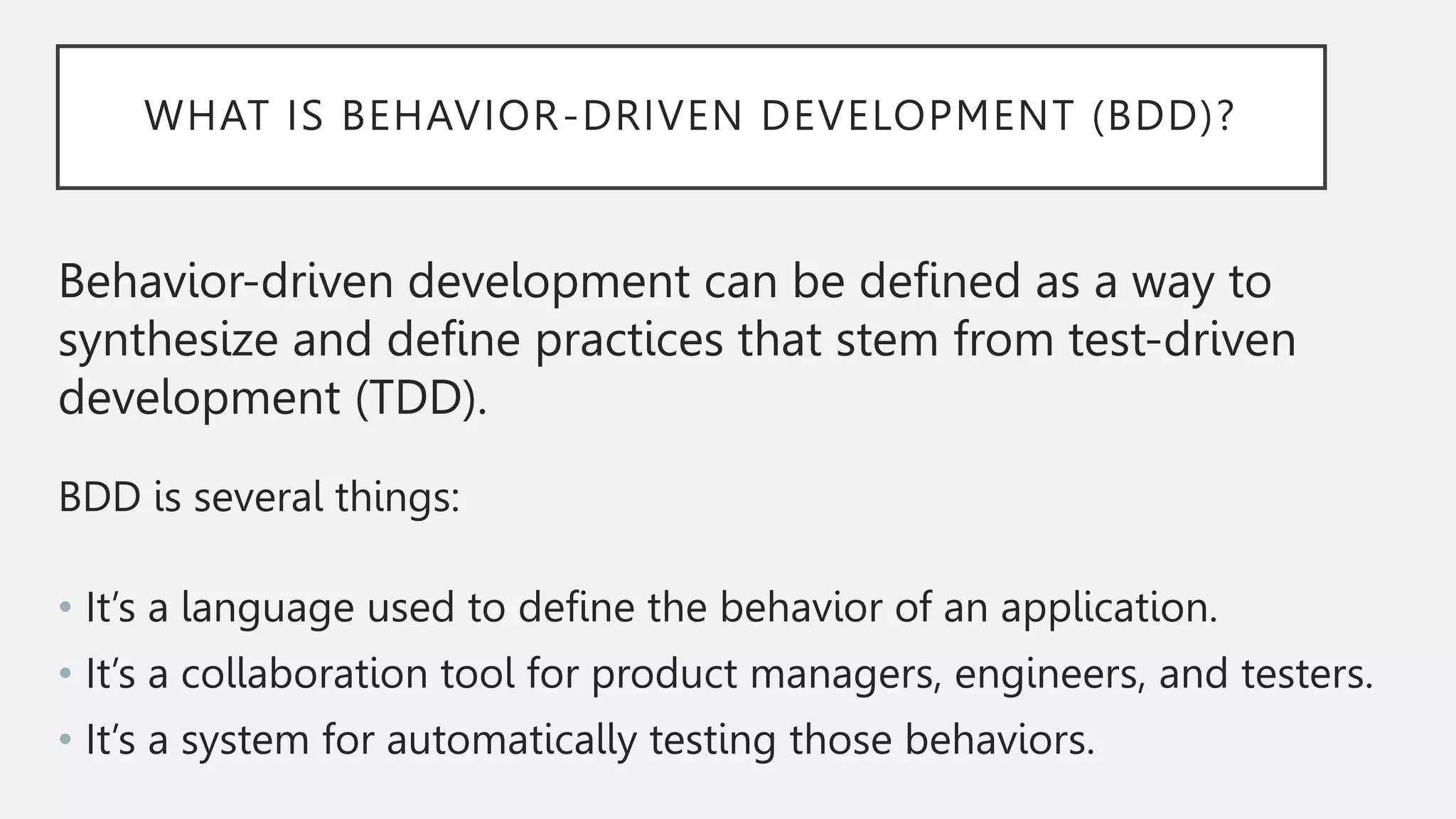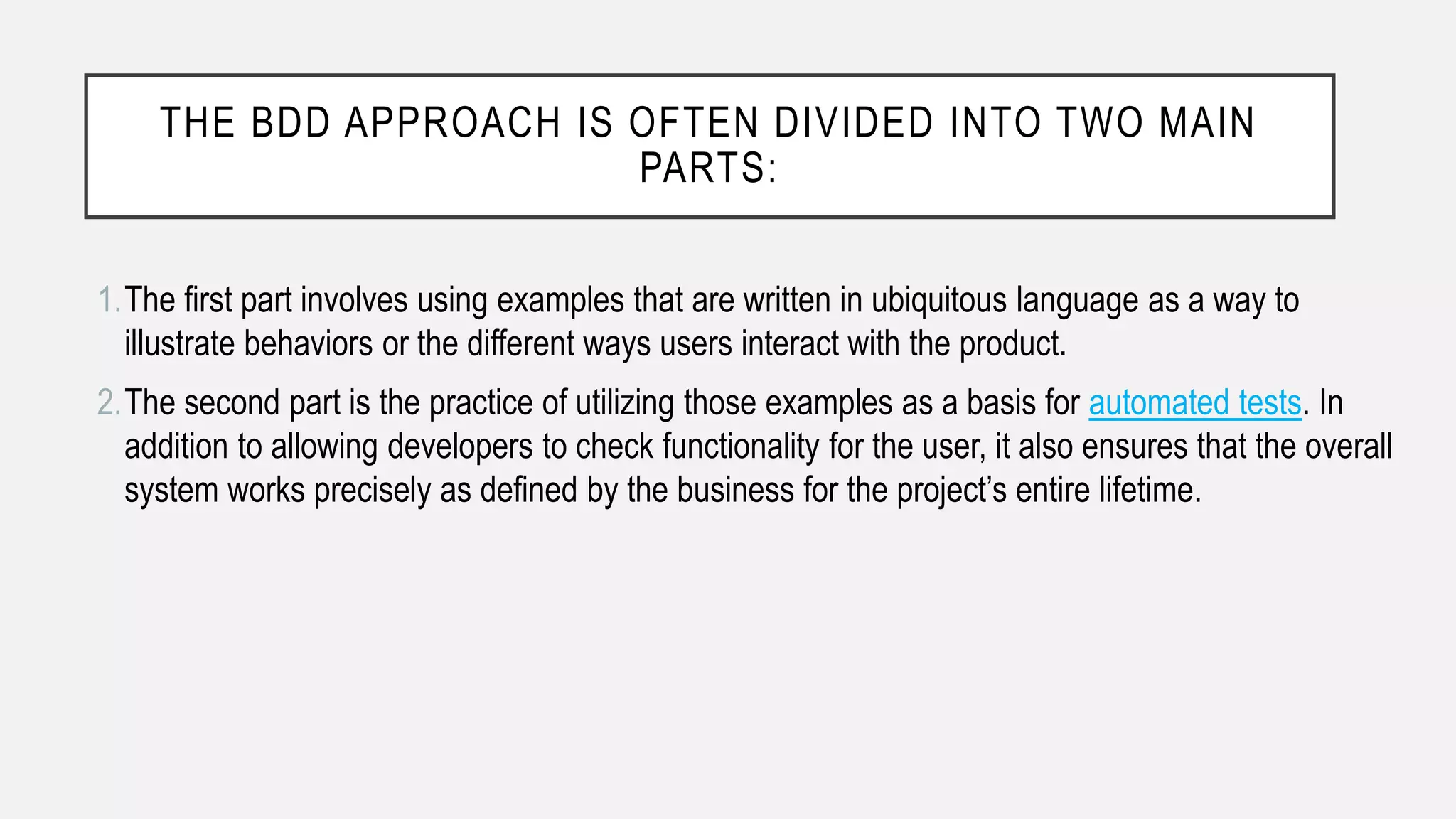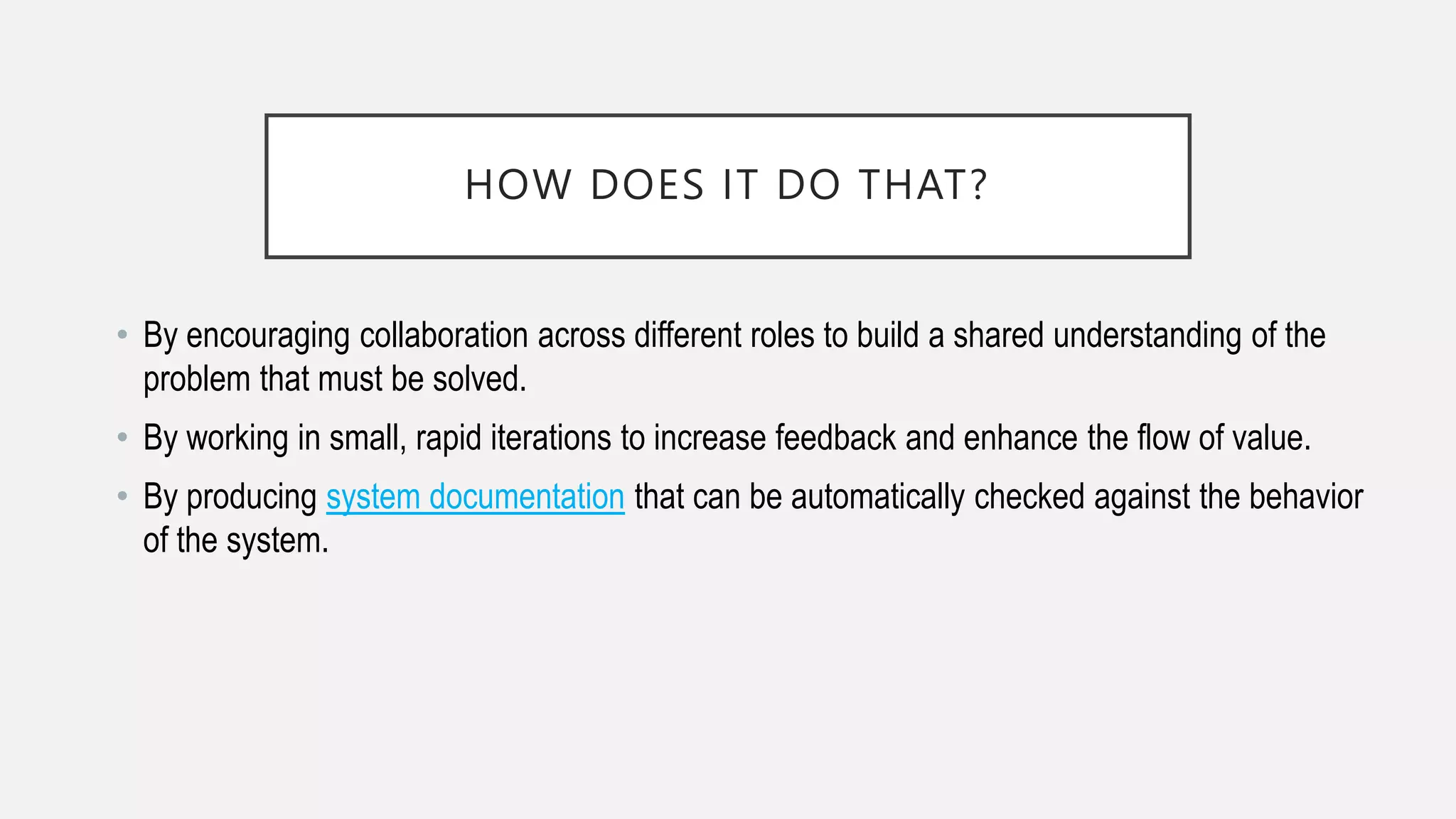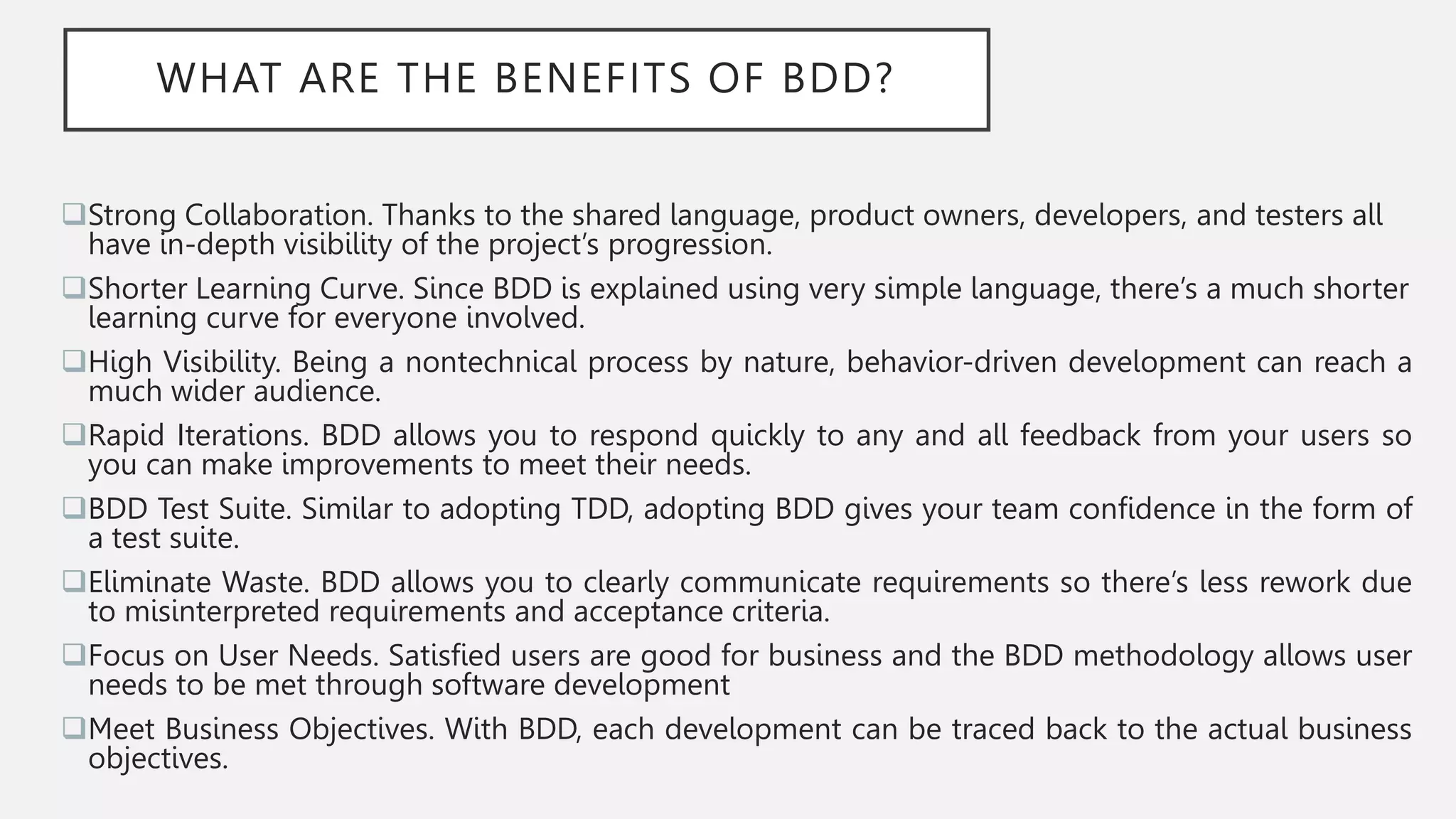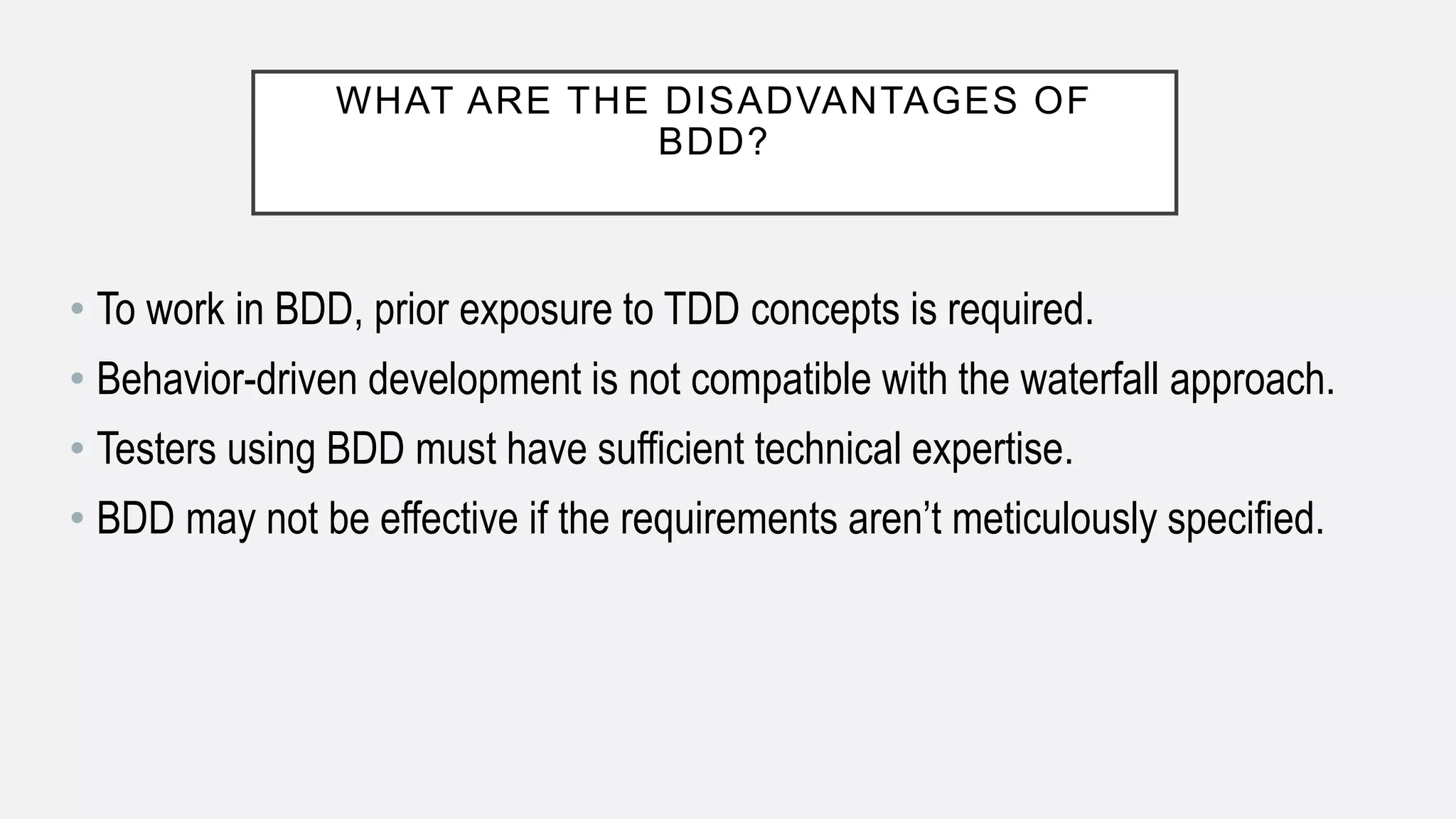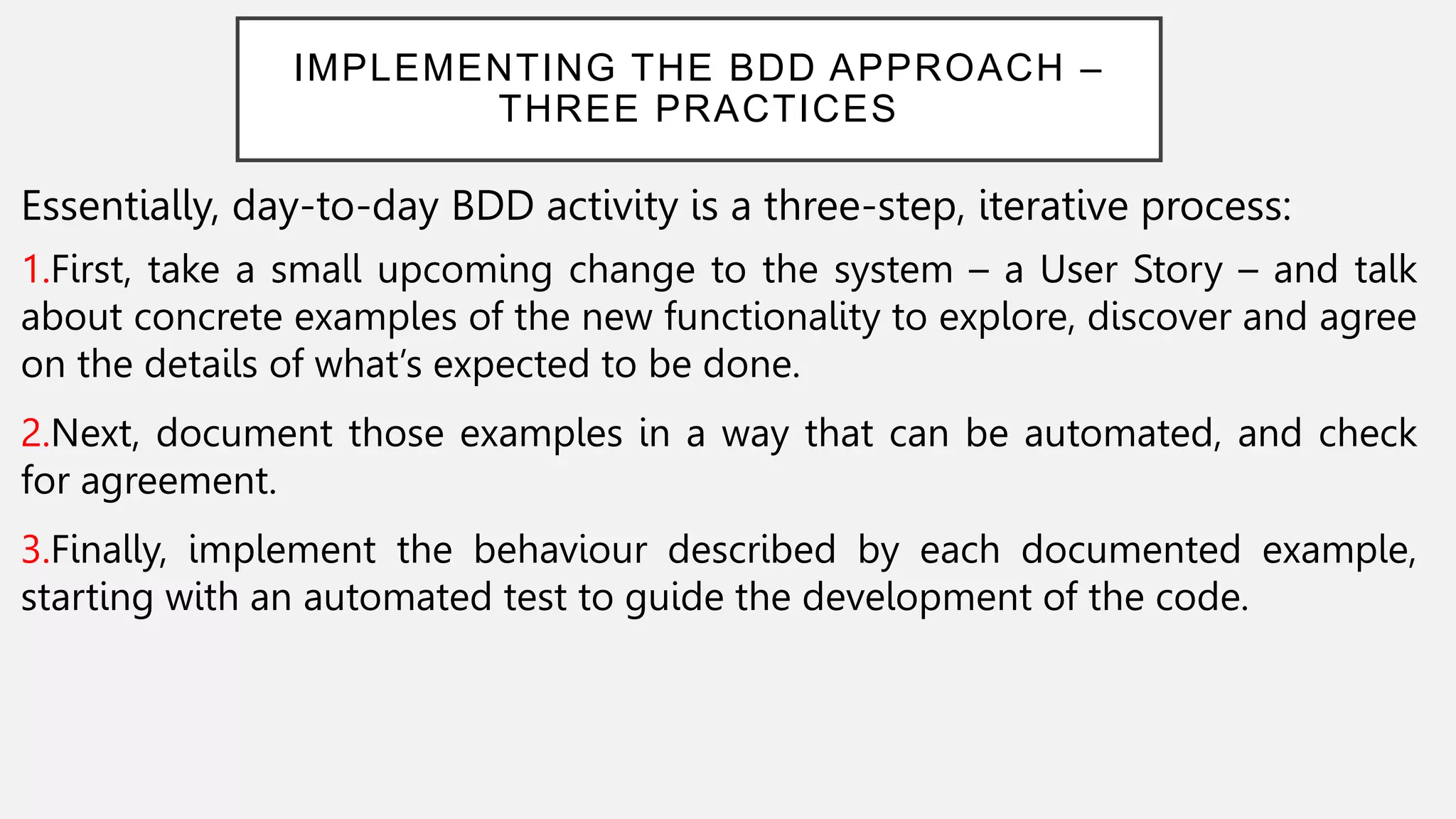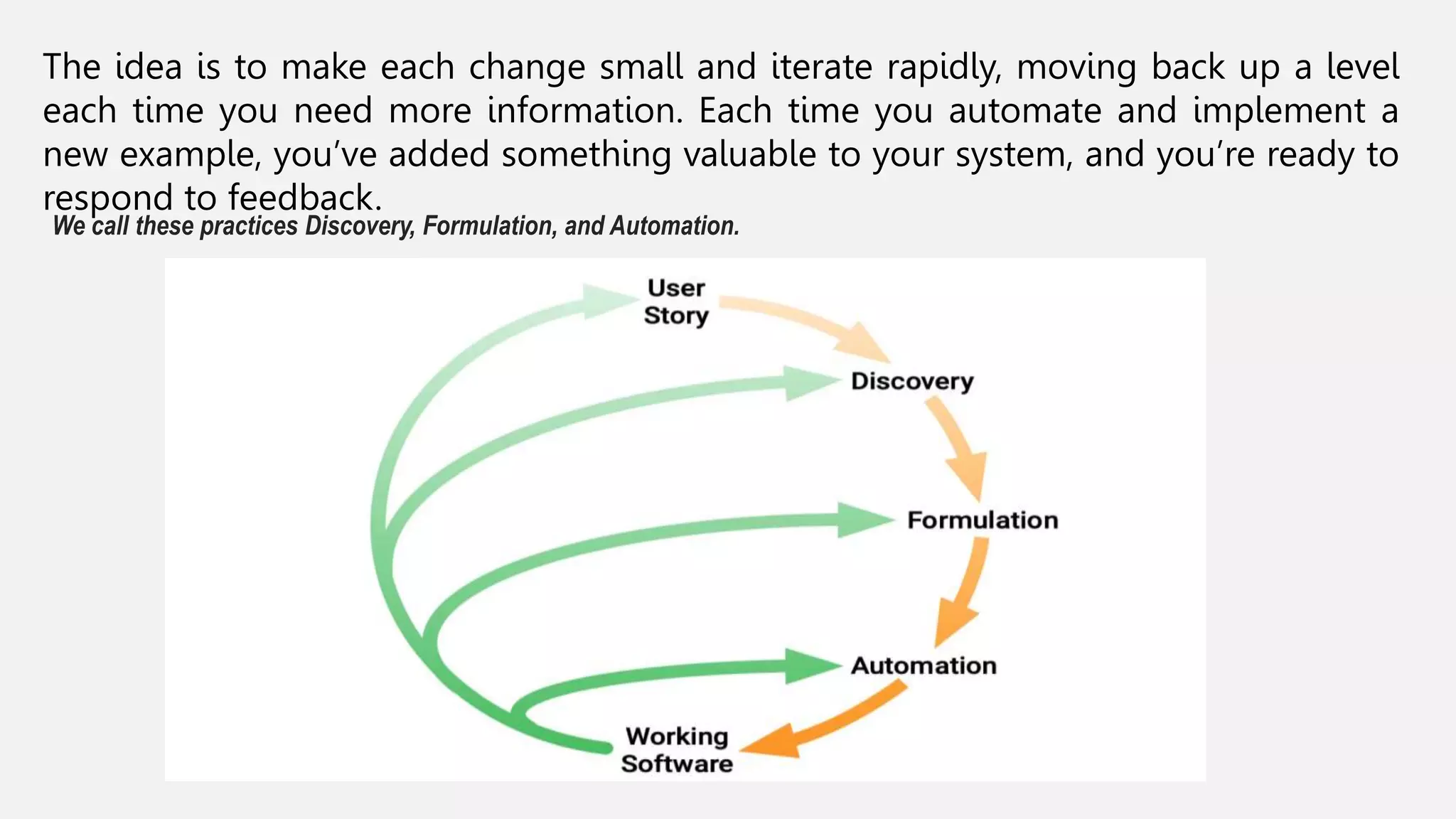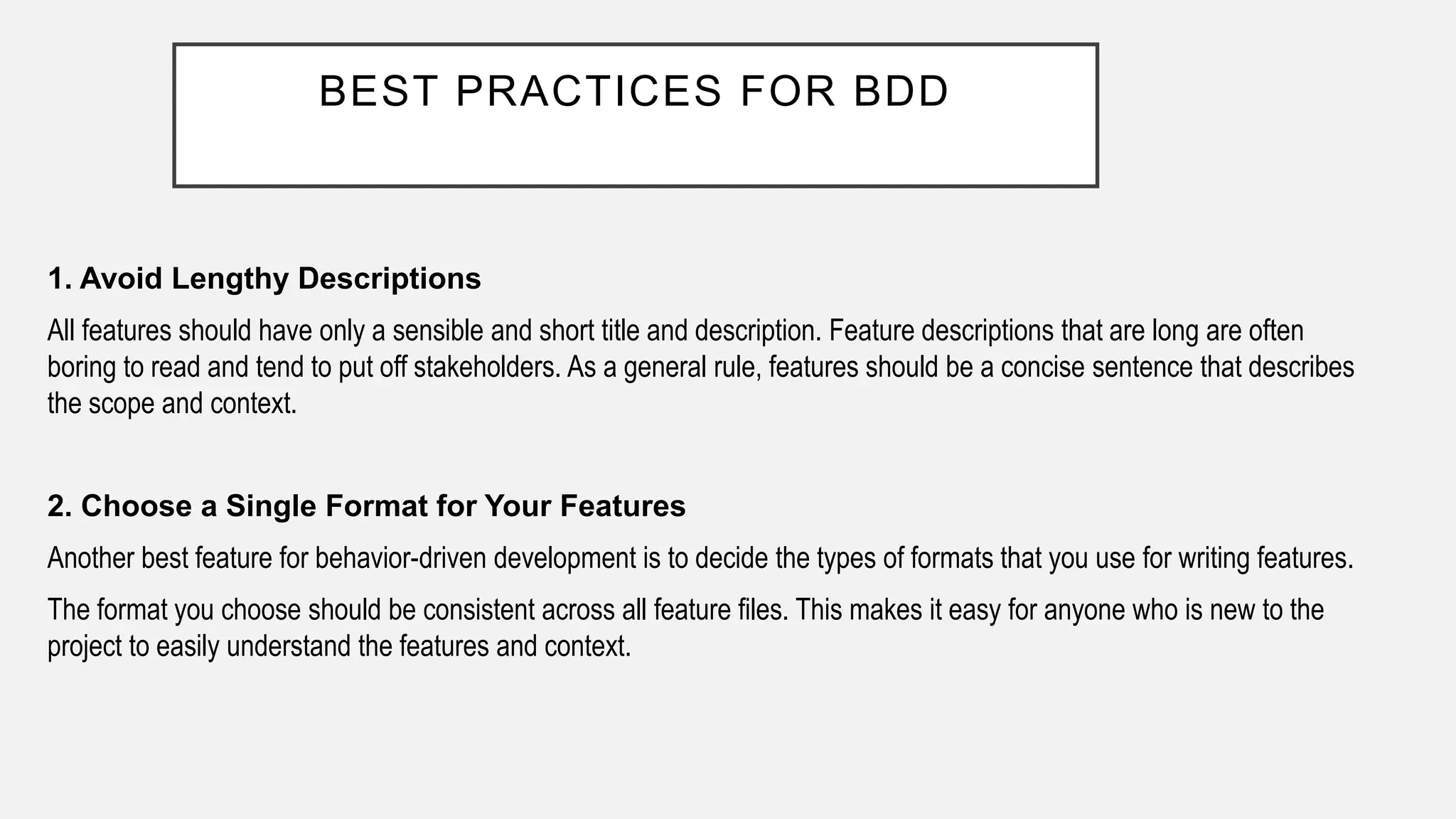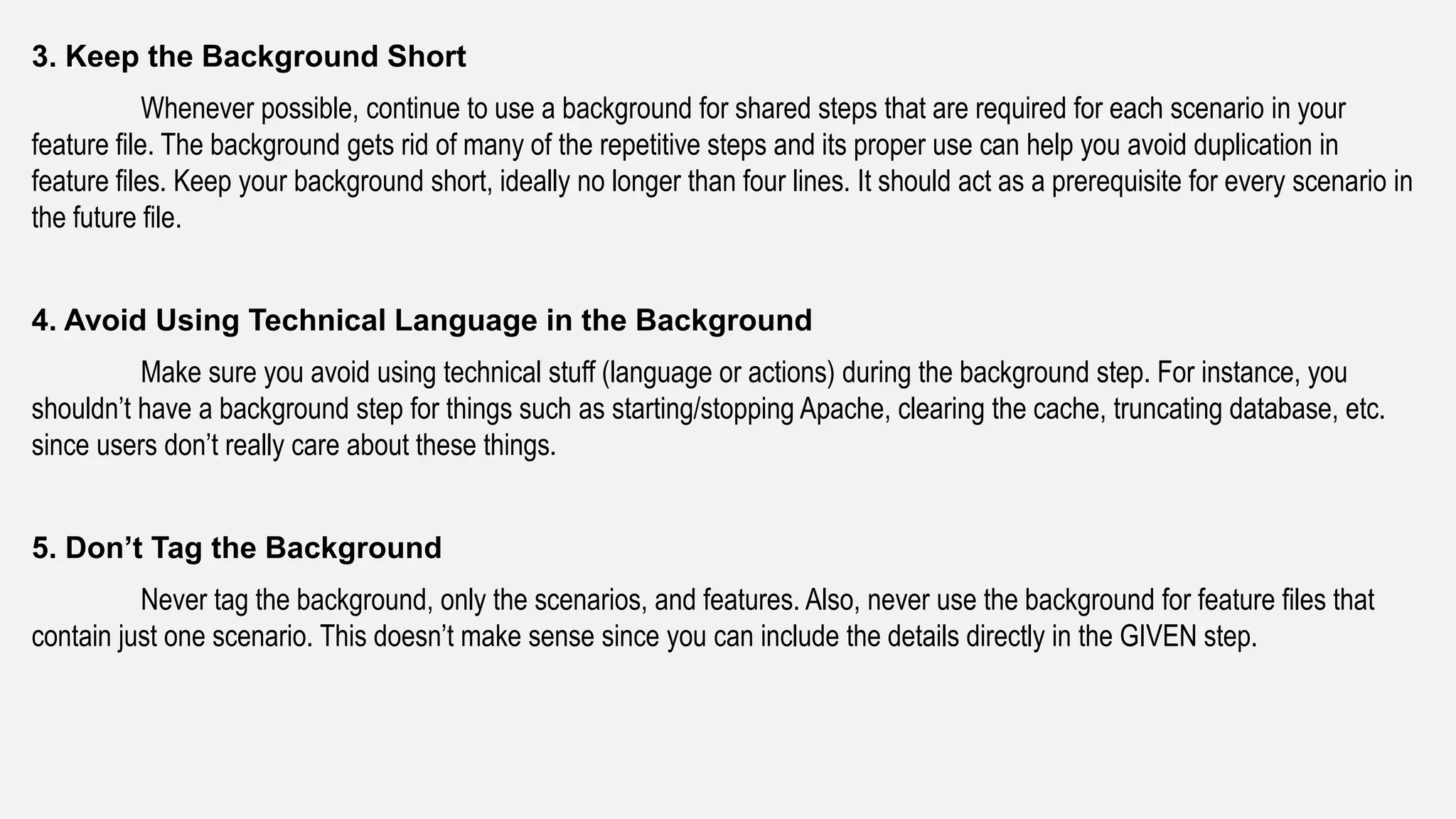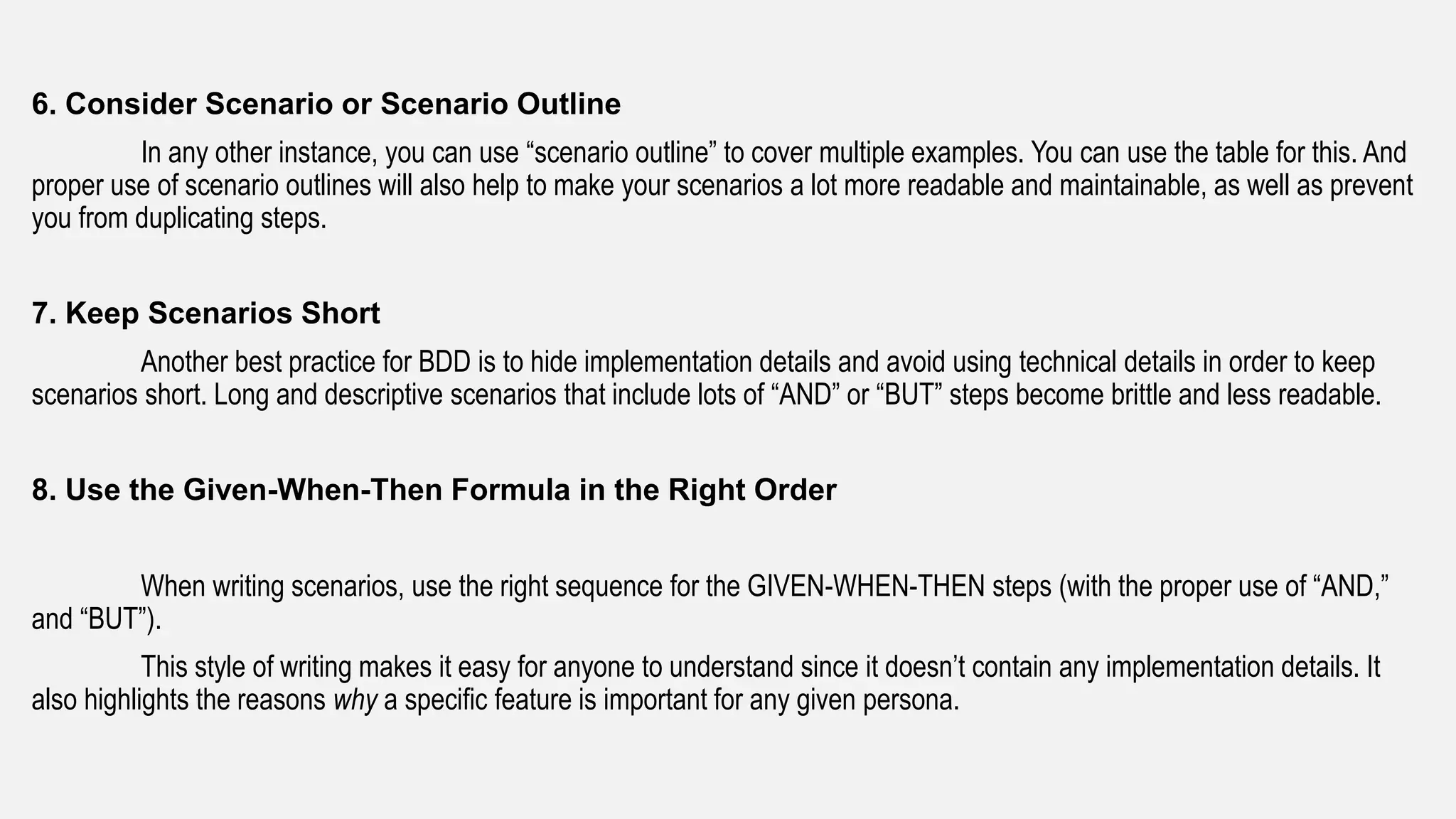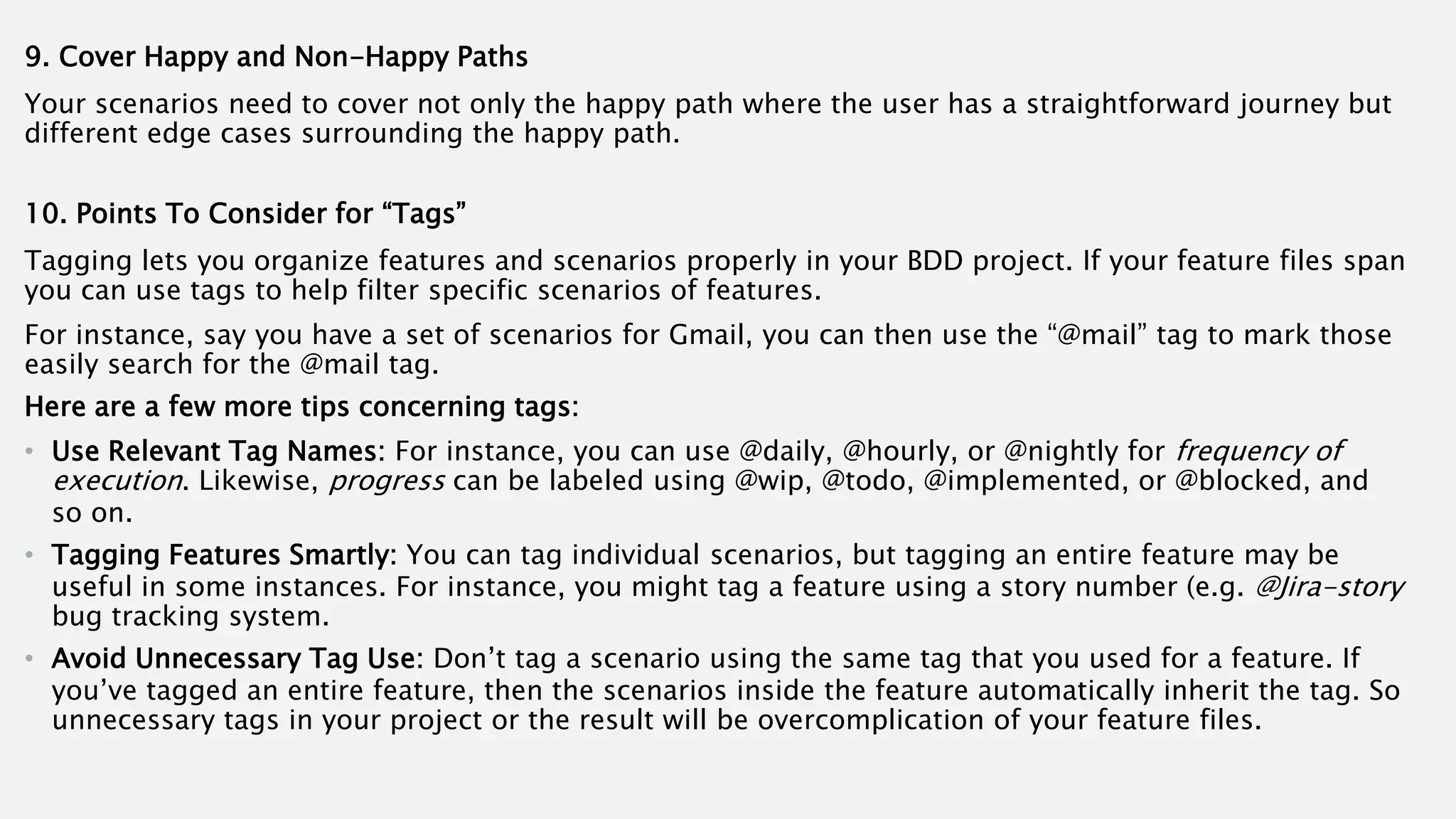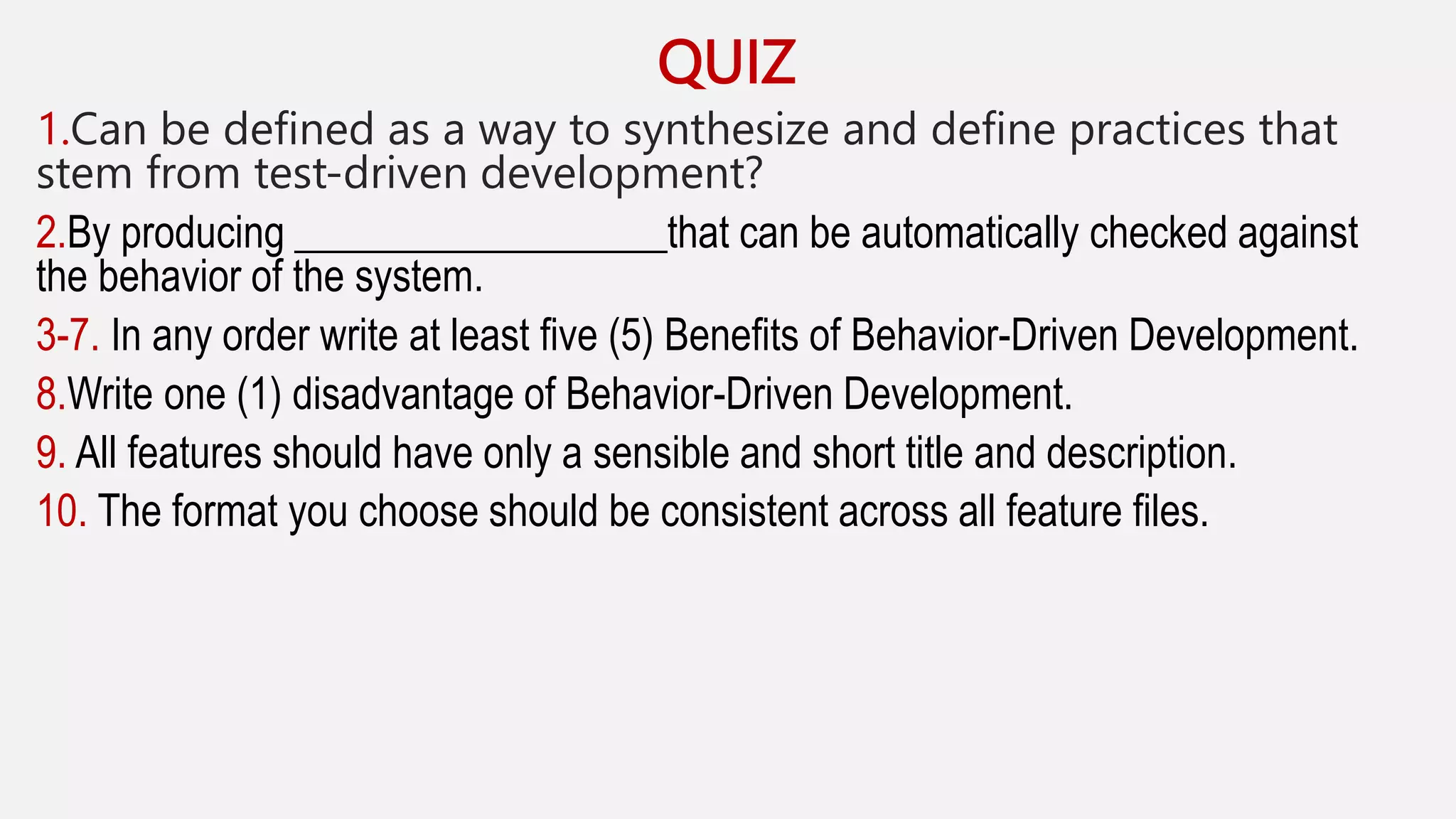Behavior-driven development (BDD) is a way to synthesize practices from test-driven development. It defines the behavior of an application using examples written in a shared language. These examples form the basis for automated tests to ensure the system works as intended. BDD encourages collaboration, works in small iterations with feedback, and produces documentation that can be checked against the system's behavior.

